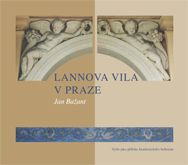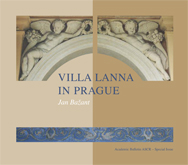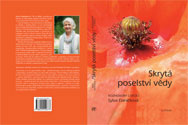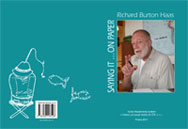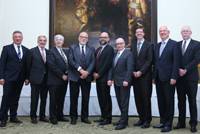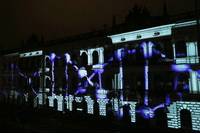Cesta k detailnímu pochopení funkce metalloenzymů Pracovník Ústavu organické chemie a biochemie AV ČR Mgr. Lubomír Rulíšek, CSc., DSc., obhájil před komisí Fyzikální chemie disertaci Theoretical Calculations of Physico-Chemical and Spectroscopic Properties of Bioinorganic Systems a získal vědecký titul „doktor chemických věd“. Lubomír Rulíšek – absolvent Přírodovědecké fakulty UK v Praze – působí v tomto ústavu od roku 1996 a momentálně zastává pozici vedoucího seniorského vědeckého týmu Teoretické bioanorganické chemie.

Foto: Archiv autora
Vědeckým zájmem Lubomíra Rulíška je především studium struktury, fyzikálně-chemických vlastností a reaktivity metalloenzymů, a to prostředky moderní teoretické a kvantové chemie. Výzkum jeho skupiny vedl k formulaci reakčních mechanismů několika významných enzymů obsahujících ve svém aktivním centru ionty přechodných kovů, čímž významně přispěl k pochopení jejich funkce a role, kterou mají v živé přírodě. Výsledky zároveň slouží jako inspirace pro teoretické návrhy umělých (minimalistických) metalloenzymů katalyzujících složité a energeticky náročné chemické přeměny, což je v současnosti hlavní vědecký zájem jeho skupiny.
Shrnutí disertace Lubomíra Rulíška v anglickém jazyce.
Among the various essential elements in biocatalysis, metalloproteins play a specific role by catalysing reactions that would not occur under physiological conditions. The presence of metal ions is thus crucial for the oxidation/reduction processes, electron transfer, spin-forbidden reactions and ‘difficult reactions’, such as N2, O2, C–H bond breaking. These processes are intimately involved in the fundamental elements of life, e.g. respiration and photosynthesis. Enormous efforts, both experimental and theoretical, have been exerted to understand the structure and function of metalloproteins. While experiments (e.g., X-ray crystallography, various spectroscopic techniques, electrochemistry) are crucial in initial phases of our understanding to a particular system, theoretical calculations complement these data by providing a unique one-to-one structure-energy mapping. As such, they play indispensable role in elucidating the reaction mechanisms of bioinorganic systems, provide an insight into the phenomena of metal-ion selectivity, and shed light on the physicochemical principles (laws) governing the behaviour of these systems.
In the thesis, our efforts in the area of theoretical bioinorganic chemistry are compiled. It includes theoretical studies of reaction mechanisms of selected metalloproteins (often containing polynuclear active sites with open-shell metal ions): trinuclear copper site found in multi-copper oxidases (MCOs), dinuclear non-heme iron Δ9-desaturase (Δ9D), dinuclear zinc glutamate carboxypeptidase II (GCPII), and mononuclear manganese super-oxide dismutase (MnSOD). All of them represent highly challenging systems for quantum chemical methodology either due to the complexity of the electronic structure of the active site (MCOs, MnSOD, Δ9D) or a conformational complexity of the substrate in presumably ‘electronically simpler’ GCPII. It is shown that only by a tight interplay between theory and experiment (X-ray, spectroscopic, kinetic, and thermodynamic data) it is possible to formulate consensus reaction mechanisms for these complicated systems.
Also, closely related to bioinorganic chemistry is our ongoing research concerning the metal-ion selectivity with the long-term vision of in silico design of smaller artificial metalloenzymes. Condition sine qua non for successful accomplishment of this project is the ability to quantitatively calculate the complexion (free) energy changes associated with the binding of metal ions in biomolecules and theoretically predict the metal-ion selectivity.
Finally, methodological issues originating from our calculations of thermodynamic, kinetic, and spectroscopic properties of bioinorganic systems gave rise to modest contributions to quantum chemical and combined quantum and molecular mechanical (QM/MM) theory.
LUBOMÍR RULÍŠEK,
Ústav organické chemie a biochemie AV ČR, v. v. i.


 English
English




